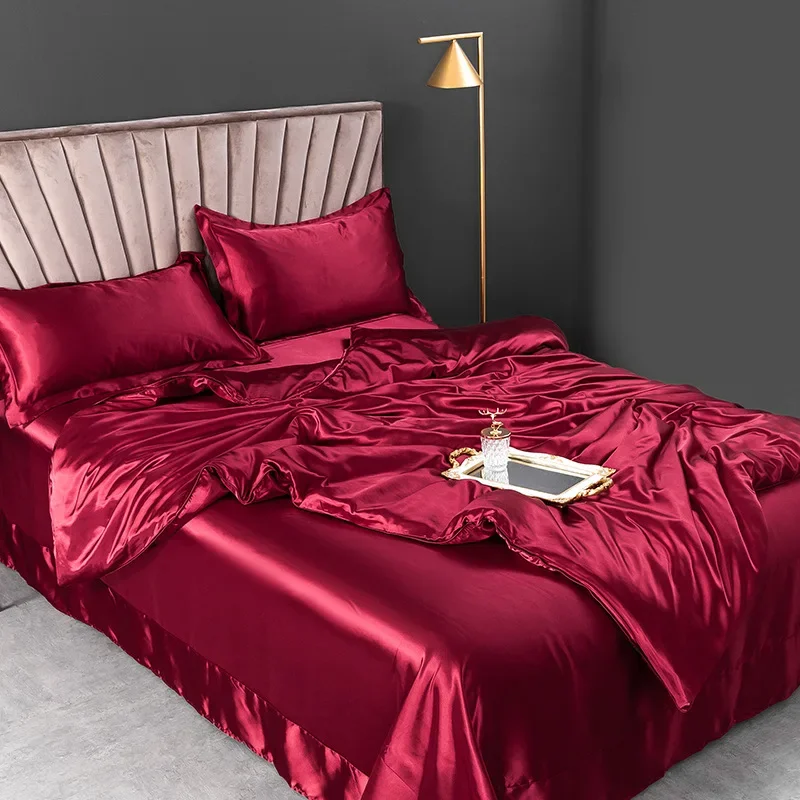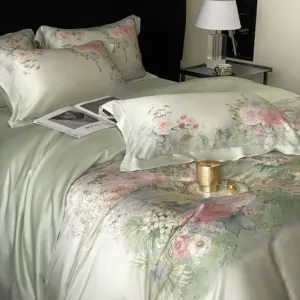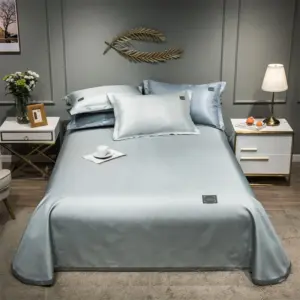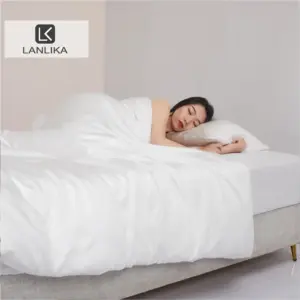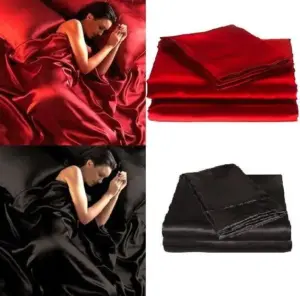Introduction: The Silk Debate Unveiled
For centuries, real silk has captivated people with its luxurious feel and natural beauty. This natural protein fiber, produced by silkworms (Bombyx mori), has been the gold standard for elegant textiles across cultures and time periods. However, in recent years, the textile world has witnessed the emergence of vegan silk alternatives – plant-based and synthetic materials designed to replicate silk’s coveted properties without using animal products.
The growing demand for cruelty-free alternatives in the luxury textile market has sparked important conversations about how these newer materials compare to traditional silk. Many consumers now find themselves wondering: can these alternatives truly match the qualities that have made silk so desirable for millennia?
This comprehensive guide aims to provide an objective comparison between traditional and vegan silk alternatives, examining everything from their production methods to performance characteristics. We’ll explore the fundamental differences between silk types across multiple criteria, including feel, durability, sustainability, care requirements, and cost – helping you determine which option might be best for your specific needs and values.
Understanding Real Silk: Origin and Production
Real silk is a natural protein fiber primarily composed of fibroin, a protein produced by silkworm larvae for their cocoons. Traditional silk production, known as sericulture, follows a specific and time-honored process:
- Silkworms (Bombyx mori larvae) are raised on mulberry leaves in controlled environments
- Each silkworm spins a cocoon around itself using twin saliva glands that produce liquid silk
- These cocoons are harvested before pupae emerge, typically by boiling them with the pupae inside
- The long, continuous fibers are then carefully unwound, combined, and processed into silk thread
- This thread undergoes further processing including degumming, dyeing, and weaving
Several varieties of real silk exist, each with distinct characteristics:
- Mulberry silk: The most common and finest variety, produced by silkworms fed exclusively on mulberry leaves. Premium mulberry silk used for bedding typically ranges from 19-25 momme weight (a measurement of silk density).
- Tussah/wild silk: A more textured, coarser silk harvested from wild silkworms. It has a more rustic appearance but still offers many of silk’s benefits.
- Eri silk: Often called “peace silk” as it allows moths to emerge before harvesting. This results in shorter fibers but addresses some ethical concerns.
- Muga silk: A rare, golden-hued silk from Assam, India, known for its durability and natural gloss.
What makes silk so desirable is its unique natural structure. Silk fibers consist of proteins arranged in a way that creates exceptional strength while maintaining incredible lightness. The triangular prism structure of silk fibers reflects light differently than round synthetic fibers, creating silk’s characteristic subtle luster. The special qualities of mulberry silk in particular have made it the preferred choice for premium bedding sets and luxury apparel.
Exploring Vegan Silk Alternatives: Materials and Methods
Vegan silk encompasses any material that mimics silk’s properties without using animal products. The category has expanded dramatically in recent years, with innovations ranging from plant-based fibers to advanced biotech solutions.
Lyocell/Tencel
Derived from eucalyptus wood pulp, lyocell is produced through a closed-loop process that reuses 99% of solvents and water. The resulting fiber offers exceptional softness and drape similar to silk. The sustainable production process of vegan silk like lyocell involves dissolving wood pulp in a non-toxic solvent, then extruding and solidifying the fibers.
Bamboo Lyocell
Similar to eucalyptus-based lyocell but using bamboo as the raw material. Bamboo grows incredibly quickly without pesticides and requires minimal water, making it an environmentally friendly option. The processing transforms bamboo’s tough fibers into remarkably soft material.
Cupro/Bemberg
Made from cotton linter (the ultrafine fibers that adhere to cotton seeds after ginning), cupro utilizes what would otherwise be agricultural waste. The manufacturing process dissolves these fibers in a copper-ammonia solution before spinning them into smooth, silky threads with excellent drape and breathability.
Plant-Based Innovations
Several emerging alternatives derive from innovative plant sources:
– Pineapple leaf fiber (Piñatex)
– Lotus stem fiber
– Orange fiber from citrus juice byproducts
Soy Silk
Produced from the leftover protein residue of soybean food production, soy silk represents a creative use of agricultural byproducts. The protein is liquefied, extruded into fibers, and then spun into a silk-like fabric with good moisture absorption properties.
Biotech Solutions
The newest frontier in vegan silk includes lab-grown proteins that mimic spider or silkworm silk on a molecular level. These materials promise to most closely replicate natural silk’s performance while eliminating both environmental and ethical concerns.
Understanding how vegan silk is made provides important context for comparing its performance to traditional silk. The wide variety of vegan silk bedding options available today demonstrates the textile industry’s commitment to developing viable alternatives that satisfy consumer demand for ethical luxury.
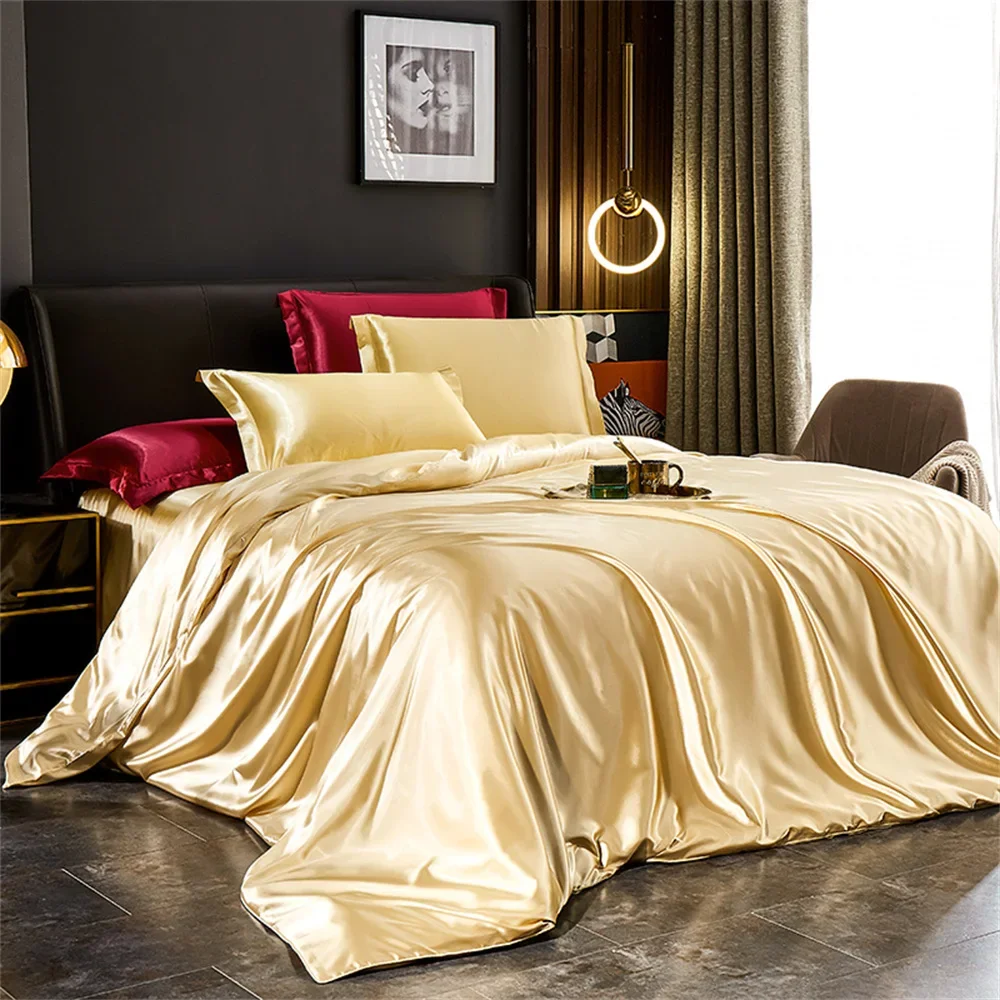
Ethical Considerations: Animal Welfare vs. Plant-Based Production
The ethical dimension forms a critical aspect of the comparison between real silk and vegan alternatives. Traditional silk production raises several animal welfare concerns that drive many consumers toward alternatives.
The conventional silk harvesting method involves boiling silkworm cocoons while the pupae are still inside. This process kills approximately 3,000 silkworms to produce a single pound of silk. Commercial silk farming often involves intensive practices where silkworms are bred to maximize silk production rather than for their natural lifecycle.
Peace silk (also called ahimsa silk) represents an alternative that allows moths to emerge from their cocoons naturally before harvesting. While this addresses some ethical concerns, the resulting broken fibers produce a different texture and quality than conventional silk. Furthermore, even with peace silk, silkworms are still bred in captivity primarily for human use.
Vegan silk alternatives eliminate animal involvement entirely, aligning with principles of:
– Preventing unnecessary animal exploitation
– Reducing sentient being harm
– Supporting cruelty-free manufacturing practices
– Consistency with vegan lifestyle choices
However, ethical considerations extend beyond animal welfare. When choosing silk or cruelty-free options, it’s important to consider:
– Labor conditions in production facilities
– Fair trade practices and worker compensation
– Transparency in supply chains
– Community impact where materials are grown or processed
Both industries have examples of both ethical and problematic practices. Consumer awareness has driven improvements across the textile sector, with more brands prioritizing ethical certifications and transparency in their operations.
The ethical choice ultimately depends on individual values and priorities. For those who prioritize animal welfare above all else, vegan alternatives present a clear advantage. Others may weigh additional factors including environmental impact, which we’ll explore in the next section.
Environmental Impact: A Sustainability Comparison
When evaluating environmental footprints, both real silk and vegan alternatives present a complex sustainability picture with distinct advantages and challenges.
Real silk production has several environmental considerations:
– Mulberry cultivation requires moderate water usage (though less than cotton)
– Traditional sericulture typically uses fewer synthetic pesticides than conventional cotton farming
– Processing includes degumming (removing sericin protein) which requires water and sometimes harsh chemicals
– Natural silk is biodegradable, decomposing fully within 1-5 years in proper conditions
– Carbon footprint includes heating requirements for silkworm rearing
Vegan silk alternatives vary significantly in their environmental profiles:
| Material | Water Usage | Chemical Input | Biodegradability | Energy Use |
|---|---|---|---|---|
| Lyocell/Tencel | Low-moderate (closed-loop system reuses 99% of water) | Low-moderate (uses less toxic solvents) | Biodegradable (2-3 years) | Moderate |
| Bamboo Lyocell | Low (bamboo requires minimal irrigation) | Moderate (chemical processing) | Biodegradable (2-3 years) | Moderate |
| Cupro | Low (uses waste cotton linters) | Higher (copper-ammonia solution) | Biodegradable (slower) | Moderate-high |
| Synthetic silks | Very low water in production | High (petroleum-derived) | Non-biodegradable | High |
Sustainable innovations continue to emerge in both industries. Some silk producers have implemented organic mulberry farming and water recycling systems. Meanwhile, companies developing bamboo silk sheets and eucalyptus silk sheets continue to refine closed-loop systems that minimize environmental impact.
The environmental “winner” depends largely on specific priorities—biodegradability, water conservation, chemical reduction, or carbon footprint—as well as the specific production methods used by individual manufacturers. Third-party certifications can help identify truly sustainable options in both categories.
Texture and Feel: The Sensory Experience
The tactile experience represents one of the most significant points of comparison between real silk and vegan alternatives. Real silk possesses a distinctive sensory profile that has defined luxury for centuries:
– An unmistakably smooth, almost liquid-like glide against skin
– Exceptional lightness that feels barely present yet insulating
– A natural cooling effect on contact followed by warming as it drapes
– A gentle, subtle sheen that catches light without appearing shiny
– A uniquely soft hand-feel that combines softness with structure
Vegan silk alternatives offer varying degrees of similarity to this sensory experience, with some coming remarkably close:
– Lyocell/Tencel provides exceptional softness and a cool-to-touch sensation similar to silk, though with slightly less “slip”
– Bamboo lyocell offers excellent drape and softness but typically feels slightly heavier than real silk
– Cupro provides perhaps the closest match to silk’s distinctive drape and flow, with a nearly identical lightweight feel
– Soy silk offers good softness but often lacks the characteristic “glide” of real silk
For bedding applications specifically, the differences become apparent during sleep. Real silk’s temperature-regulating properties create a distinctive sleeping experience—cool in summer and warm in winter. The best vegan alternatives like those used in Sanctuary Soft’s collections come very close to this performance, though subtle differences remain.
Many consumers report that in direct sensory comparisons between silk types, the differences become increasingly subtle as vegan silk technology improves. While traditionalists may still detect the distinction, many find today’s premium vegan alternatives virtually indistinguishable in everyday use, especially for bedding applications.

Durability and Longevity: The Investment Perspective
When considering the investment value of silk versus vegan alternatives, durability becomes a critical factor in determining true cost over time.
Real silk demonstrates impressive natural strength despite its delicate appearance:
– Individual silk fibers have tensile strength comparable to steel wire of the same diameter
– Quality silk bedding (19-25 momme) typically lasts 10-15 years with proper care
– Natural resistance to pilling when compared to many other natural fibers
– Maintains its appearance well with minimal fading when properly cared for
However, real silk also has vulnerability points:
– Weakens when wet, making careful washing essential
– Degrades with prolonged UV exposure
– Can yellow over time if not properly stored
– May show water stains that are difficult to remove
Vegan silk alternatives present varying durability profiles:
– Lyocell/Tencel offers excellent strength (especially when wet) and typically lasts 5-10 years
– Bamboo-based fabrics resist pilling better than many synthetics but may wear faster than premium silk
– Cupro provides good longevity but may require more careful handling than other alternatives
– Newer biotech silk alternatives show promising durability but lack long-term performance data
When comparing natural silk versus alternative fabrics for durability, care practices significantly impact longevity for both categories. While premium silk may maintain its quality longer under ideal conditions, vegan alternatives often withstand modern washing machines and more frequent washing better than traditional silk.
For consumers weighing investment value, the durability equation must include both the expected lifespan and the practical reality of care requirements—a critical factor we’ll explore in more detail in a later section.
Performance Properties: Beyond Aesthetics
Beyond their look and feel, both real silk and vegan alternatives offer distinct functional properties that impact their performance in practical applications.
Breathability and Temperature Regulation
Real silk excels at temperature regulation due to its natural protein structure, which efficiently wicks moisture while providing insulation. This creates a microclimate that adjusts to body temperature—cooling when hot and warming when cold. The material can absorb up to 30% of its weight in moisture without feeling damp.
Vegan alternatives vary in their temperature-regulating abilities:
– Lyocell/Tencel offers excellent breathability and moisture management, sometimes outperforming silk in hot conditions
– Bamboo-based fabrics provide good air circulation but may not match silk’s warming properties in cold weather
– Cupro delivers temperature regulation similar to silk but may not wick moisture quite as effectively
Hypoallergenic Properties
Real silk possesses natural hypoallergenic qualities that make it beneficial for those with sensitive skin or allergies. Its tight weave naturally resists dust mites, and its protein structure rarely triggers skin reactions. Additionally, silk contains sericin, which has antimicrobial properties.
Vegan alternatives generally perform well for sensitive skin:
– Lyocell/Tencel has an exceptionally smooth surface that minimizes irritation
– Bamboo contains natural antimicrobial compounds that remain partially present in the finished fabric
– Most vegan alternatives are free from animal proteins that could trigger specific allergies
Moisture Management
For applications like bedding, moisture management becomes particularly important:
– Real silk absorbs moisture gradually and releases it slowly through evaporation
– Lyocell can absorb slightly more moisture than silk but releases it more quickly
– Bamboo-based fabrics typically offer the highest absorption capacity
For those seeking optimal temperature regulation, cooling silk sheets in either traditional or vegan varieties can significantly improve sleep quality by managing the microclimate around the body throughout the night.
100% Silk Sheets, Green Silk Sheets, King Size Silk Bedding Set, Mulberry Silk Bedding Sets, Queen Size Silk Bedding Set
Price range: $1,246.21 through $1,615.22 Select options This product has multiple variants. The options may be chosen on the product pageEucalyptus Silk Bedding Sets, Eucalyptus Silk Sheets
Price range: $360.24 through $393.60 Select options This product has multiple variants. The options may be chosen on the product page- Price range: $267.82 through $306.55 Select options This product has multiple variants. The options may be chosen on the product page
Bamboo Silk Sheets, Cooling Silk Sheets
Price range: $130.76 through $177.80 Select options This product has multiple variants. The options may be chosen on the product page100% Silk Sheets, King Size Silk Bedding Set, Mulberry Silk Bedding Sets, Queen Size Silk Bedding Set, White Silk Sheets
Price range: $1,000.79 through $1,351.42 Select options This product has multiple variants. The options may be chosen on the product pageBamboo Silk Sheets, Queen Size Silk Fitted Sheet
Price range: $230.24 through $297.88 Select options This product has multiple variants. The options may be chosen on the product page
Care and Maintenance: The Practical Reality
The care requirements for real silk versus vegan alternatives represent one of the most practical distinctions between these materials in everyday use.
Real Silk Care Requirements:
– Hand washing recommended with pH-neutral detergents (around 7.0)
– Cold water only (under 86°F/30°C)
– No wringing or twisting when wet
– Air drying away from direct sunlight
– Low-temperature iron on reverse side if needed
– Storage in breathable bags to prevent yellowing
Vegan Silk Care Variations:
– Most can withstand gentle machine washing
– Lyocell/Tencel and bamboo alternatives typically allow warm water washing
– Many vegan options can be tumble dried on low settings
– Less susceptible to water spotting than real silk
– Generally more resistant to detergent residue
For many consumers, the ease of care represents a significant advantage for vegan alternatives. The ability to machine wash and sometimes tumble dry these materials means less specialized knowledge and time investment required for maintenance.
However, proper care extends the lifespan of both material types. Premium real silk that receives appropriate care will typically outlast vegan alternatives, potentially offsetting the higher initial investment and more demanding care routine.
When comparing vegan and natural silk from a lifestyle perspective, the care requirements should be honestly assessed against individual preferences and available time for maintenance.
Cost Analysis: Value for Money
The price difference between real silk and vegan alternatives represents a significant consideration for many consumers evaluating their options.
Real Silk Pricing Factors:
– Premium mulberry silk typically ranges from $70-$300 for pillowcases and $250-$1,000+ for sheet sets
– Pricing varies based on:
– Momme weight (19-25 momme considered premium quality)
– Silk variety (mulberry commanding the highest prices)
– Processing quality and finish
– Brand positioning
Vegan Silk Price Points:
– Vegan alternatives generally cost 30-50% less than comparable real silk items
– Price variations exist between different vegan silk types:
– Lyocell/Tencel products typically command higher prices among alternatives
– Bamboo-based options often present mid-range pricing
– Synthetic silk alternatives usually offer the lowest price points
When evaluating value, initial price represents only one factor. The complete value equation must include:
– Expected product lifespan (typically longer for well-cared-for real silk)
– Maintenance costs over time
– Performance satisfaction throughout ownership
– Personal valuation of ethical and environmental factors
For example, a $300 silk pillowcase lasting 12 years amounts to $25 per year of use, while a $150 alternative lasting 6 years equals the same annual cost—making the actual value proposition more complex than initial price comparison suggests.
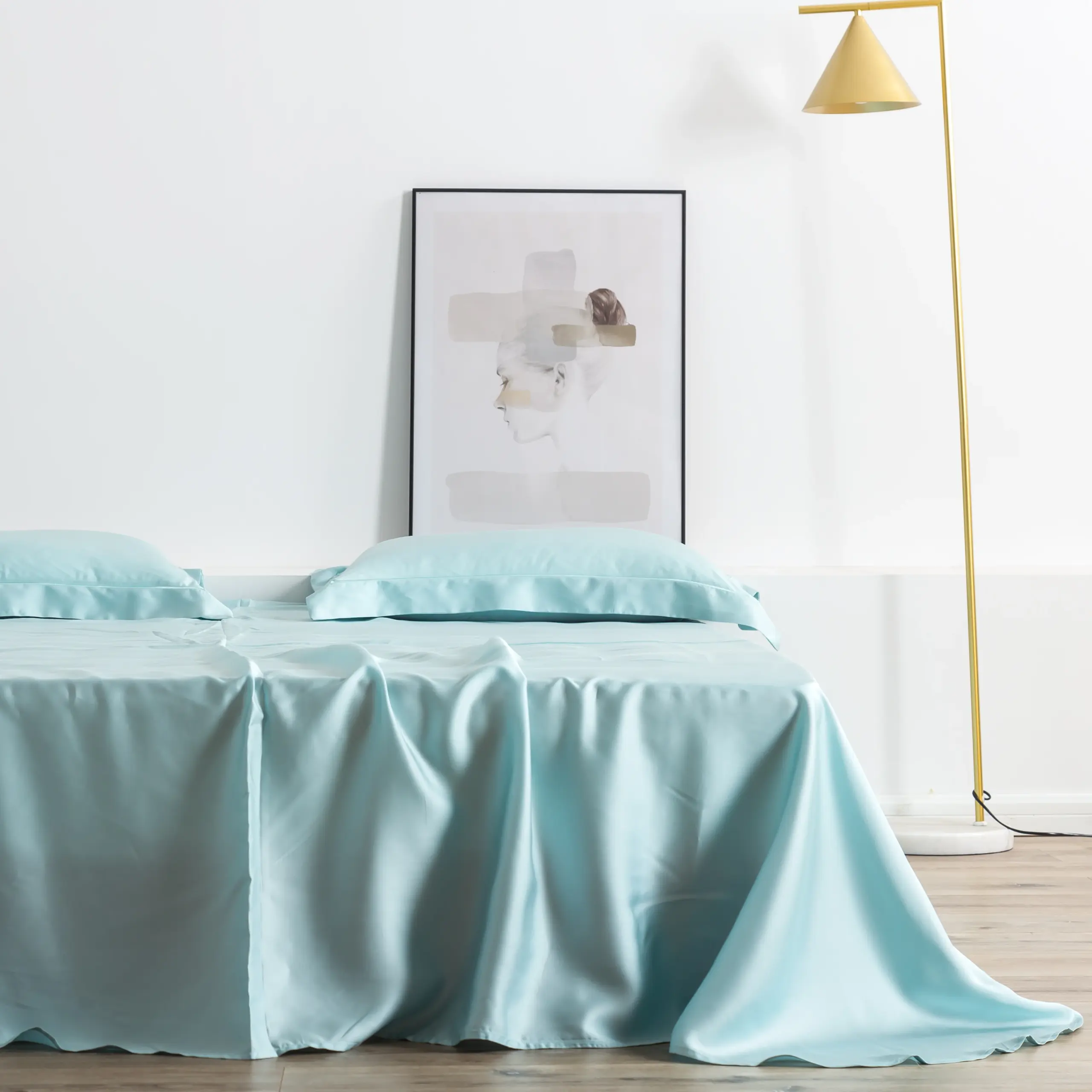
Best Use Cases: Matching Material to Purpose
Different applications can favor either real silk or vegan alternatives based on their specific requirements and use conditions.
Ideal Applications for Real Silk:
– Special occasion attire where traditional luxury is paramount
– Heritage items intended to become heirlooms
– Formal wear where distinctive drape and sheen matter
– Specialized skincare applications benefiting from silk’s protein structure
– Luxury gift items where traditional prestige carries significance
Best Uses for Vegan Silk Alternatives:
– Everyday bedding requiring regular washing
– Travel accessories that may face unpredictable conditions
– Children’s items subject to frequent laundering
– Clothing worn during activities causing perspiration
– Items for those with specific ethical commitments
– Budget-conscious luxury where appearance matters more than heritage
For specific applications, recommendations include:
Bedding:
Traditional silk excels for those prioritizing temperature regulation and luxury feel who are willing to commit to proper care. Vegan alternatives like those found in silk bedding alternatives work better for those who prefer easier care or have strong ethical preferences.
Pillowcases:
Both materials offer benefits, with silk pillowcases reducing hair friction and facial creasing. Vegan alternatives with similar slip properties can provide comparable benefits with easier care.
Clothing:
Traditional silk remains the standard for formal wear requiring specific drape and sheen, while vegan alternatives often work better for everyday items needing frequent washing.
The best material ultimately depends on aligning the specific performance characteristics with your primary intended use and personal priorities.
Pros and Cons: A Simplified Decision Framework
To help crystallize the comparison, here’s a straightforward assessment of the advantages and disadvantages of both real silk and vegan alternatives.
Real Silk Advantages:
– Unmatched natural sheen and distinctive appearance
– Superior temperature regulation for varied climates
– Historical prestige and traditional luxury signaling
– Exceptional drape and movement in garments
– Potentially longer lifespan with proper care
– Complete biodegradability at end of life
Real Silk Disadvantages:
– Higher initial cost for quality pieces
– Ethical concerns regarding silkworm treatment
– Demanding care requirements
– Vulnerability to water damage and staining
– Potential yellowing over time
– Higher environmental impact in some production methods
Vegan Silk Advantages:
– Cruelty-free production aligning with ethical values
– Significantly easier care and maintenance
– Greater resistance to water damage
– More affordable price points
– Innovations continually improving performance
– Some options offer superior moisture management
Vegan Silk Disadvantages:
– Variable quality between different types and brands
– Typically shorter lifespan than premium real silk
– Some alternatives lack silk’s distinctive sheen and hand-feel
– Newer materials with less established performance history
– Some processing methods involve significant chemical use
– Synthetic options have poor biodegradability
For a deeper dive into the complete assessment, exploring the pros and cons of silk and vegan silk can help clarify which factors matter most to your specific situation.
Making Your Choice: Key Decision Factors
Determining whether vegan silk is “as good as” real silk ultimately depends on your personal priorities and how you weigh different factors. Consider the following reflections to guide your decision:
Priority Assessment Questions:
– How important is ethical production in your purchasing decisions?
– Are you willing to invest time in specialized care procedures?
– What specific performance qualities matter most for your intended use?
– Do you value tradition and historical craftsmanship?
– How important is long-term durability versus initial investment?
– Does environmental impact significantly influence your choices?
Use-Based Considerations:
For bedding, consider how different materials might affect your sleep experience. If you tend to sleep hot, moisture-wicking properties become more important than insulation. If you have sensitive skin, the hypoallergenic properties of both materials merit consideration.
For clothing, think about care requirements versus appearance. Special occasion items that are rarely washed might justify the luxury of real silk, while everyday items might benefit from the practicality of alternatives.
Finding Your Balance:
Remember that this doesn’t need to be an all-or-nothing choice. Many consumers who appreciate both materials choose bamboo silk bedding sets for everyday use while reserving traditional silk for special occasions or specific applications where its unique properties are most valued.
The textile industry continues to evolve, with innovations regularly narrowing the performance gap between traditional and alternative materials. What remains constant is the importance of quality within each category—premium examples of both real and vegan silk will always outperform inferior versions regardless of material type.
By prioritizing what matters most to you personally, you can make an informed choice that aligns with both your practical needs and deeper values.

